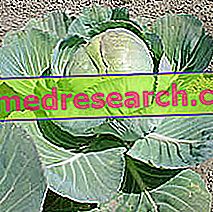Watch the video
X Watch the video on youtubeVaricose veins (or simply varices ) are pathological dilations of the veins. It is a disorder that prefers lower limbs, although it may also occur in other areas.

Always elongated and evident, the varicose veins assume a characteristic tortuous course, constituting a real aesthetic discomfort for many women. In addition to the venous insufficiency - which is the main cause - varicose veins can be the consequence of various disorders, such as: thrombus of the deep veins, compromise of the vessels, deficiency of the muscular pump, obesity and a sedentary lifestyle.
Beyond aesthetic problems, varicose veins can cause symptoms such as swollen ankles, muscle cramps, tingling in the legs, swollen / tired legs, constant perception of cold and spider veins.
What to do
- Maintain your ideal weight. Weight control is essential for managing varicose veins, minimizing the risk of symptom degeneration
- Practice physical exercise and regular sport, a very useful trick to promote blood circulation. It is recommended to avoid sports that require sudden jerks or movements (eg tennis or jogging); rather, prefer sports like swimming or aiming for long, brisk walks
- Raise the bed in the area near the feet
- Wear elastic stockings / graduated compression bandages: this is a good remedy to counteract the stagnation of blood in the capillaries (a distinctive sign of venous insufficiency and varicose veins)
What NOT to do
- Stay upright for a long time. Such an attitude can promote venous hypertension
- Wear clothes that are too tight, such as pants, tight underwear, belts and tights. This type of clothing hinders the circulation of the blood, highlighting varicose veins
- Wear high-heeled shoes often: flat shoes force the leg muscles to work harder, preserving the integrity of the veins
- Smoking: smoking increases the risk of venous insufficiency, especially in predisposed subjects
- Expose yourself for long periods in the sun or take very hot baths
- Remain in hot environments for a long time: the high external temperature can favor vasodilation
- Remain seated or standing for long periods: the change of position encourages blood flow
- Sit with crossed legs: some doctors believe that this position can somehow aggravate venous insufficiency, favoring the appearance of varicose veins
What to eat
- Follow a low-calorie diet and take plenty of fluids, especially in the case of overweight / obesity
- Take lots of fruit and vegetables, as it is rich in antioxidants (vitamin C and E)
- Consume foods rich in vitamin C and dark purple / blue
What NOT to Eat
- Avoid eating hard-to-digest foods, such as dips, fries and fat-rich foods
- Alcohol (moderate consumption)
- Foods rich in caffeine (eg coffee, chocolate, mate-based drinks, guarana)
Natural Cures and Remedies
To reduce the unsightly marks left by varicose veins, it is recommended to apply creams or compresses formulated with natural active ingredients with a protective and capillarotropic action on the legs:
- Butcher's broom ( Ruscus aculeatus ) → anti-inflammatory, anti-edema, vaso-protective properties
- Red vine ( Vitis vinifera ) → phlebotonic, capillar-protective, antioxidant, anti-inflammatory properties
- Horse Chestnut ( Aesculus hippocastanum ) → capillarotropic / protective, anti-inflammatory properties. The active ingredients increase capillary resistance, reduce permeability and favor lymphatic drainage.
- Centella asiatica ( Centella asiatica L.) → phlebotonic properties, stimulating microcirculation
The same active ingredients can also be taken in the form of tablets or capsules, to be used possibly also as a complement to the pharmacological treatment.
Pharmacological care
- Phlebotonic drugs: useful to increase the tone of the vein wall, reducing the feeling of heaviness in the legs (a symptom common to many women affected by varicose veins)
- Diosmin (eg Daflon, Diosven)
- Oxerutina (eg Venoruton)
- Profibrinolytic drugs: these active substances dissolve the accumulations of fibrin, collected in the varicose veins:
- Streptokinase (eg Streptase)
- Sclerotherapy: the injection of sclerosing substances is an excellent pharmacological remedy to lighten the marks left by varicose veins. The injection of the drug causes an inflammatory reaction and a fibrosis of the venous wall: by doing so, it is possible to significantly improve the blood circulation, given that the blood is diverted into healthy veins.
- Sodium tetradecyl sulfate (eg Fibro Vein)
- Ethanolamine oleate (eg Ethamolin)
- Anticoagulant drugs (topical application): useful remedy aimed at promoting blood circulation in the presence of varicose veins:
- Heparan sulphate (eg Clarema, Hemovasal)
Prevention
- Wear elastic stockings or bandages to prevent varicose vein complications: the main goal is to avoid venous hypertension
- Elevate the legs above the level of the heart: from lying down in a supine position, rest your legs on 3-4 pillows. By doing so, varicose vein formation can be prevented by encouraging blood flow
- Not smoking
- Remember to move your legs often. Subjects who, for work reasons, are forced to remain in the same position for a long time, should move their legs from time to time and stand up on their calves, to promote blood circulation, preventing the onset of varicose veins
Medical treatments
- Surgical treatments for varicose veins are indicated in case of severity and high risk of complications. The intervention involves the removal of the diseased venous tract and the subsequent reconnection of the upstream and downstream sections of the excision.
- Alternative treatments:
- valvuloplasty
- Radiofrequency ablation
- Laser Therapy



